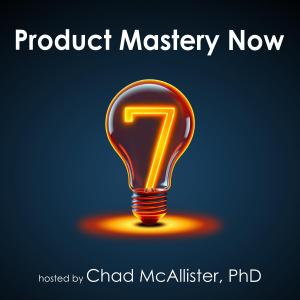Product Mastery Now for Product Managers, Leaders, and Innovators

TEI 140: Market validation in 3 steps – with Bryan Elanko
How Product Managers and Innovators Can Validate a Product Concept for a Target Market
Creating a successful product requires a diverse set of skills and one of them is properly validating a product concept. One form of this is market validation — understanding what a market segment values in the form of a product that solves a meaningful problem.
To explore the steps for conducting market validation, I spoke with Bryan Elanko, who works on strategic planning and commercialization initiatives for National Oilwell Varco. Bryan has worked in the oil and gas industry for almost ten years across various design, engineering, and management roles. In one of these roles, he implemented NPD systems to drive increased collaboration and innovation, which makes him a great guest for you, The Everyday Innovator™. I hope you enjoy the discussion.
Summary of some concepts discussed
* [2:30] What is market validation? It’s a reality check of the business opportunity, customer, the customer problem, and your proposed solution. It’s also a process to uncover snippets of reality that is behind anecdotal statements. Finally, it is a way to judge the agreement or alignment between what you see, hear, feel, and experience regarding your product and its reception by a market.
* [6:40] What problems are created when product managers don’t use market validation? Product managers need a feedback loop – a means to judge ideas that were a success and ideas that were not and why. Market validation gives you a means of knowing why product ideas are or are not a success. Using the “ready-aim-fire” analogy, market validation provides the knowledge to know if you are ready to develop a product concept into a product. Three main problems exist if you don’t do market validation properly.
* First, you are potentially delaying a successful product launch by releasing a product that does not offer customers sufficient value to entice them to purchase the product.
* Second, the organization will struggle to reach financial goals because products are released that are likely to fail.
* Third, you’ll allocate your resources inefficiently, devoting resources to projects that should have been killed but were not.
* [11:52] What are the characteristics of an effective market validation process? Some of the things that stop people from doing market validation are the myth that it is too time-consuming along with the myth that the customer is already well understood. Consequently, an effective market validation process must be quick, concise, and easy to execute to dispel the myths. Mark Zuckerberg gives the advice to “move fast and break things.” This is also good advice for conducting market validation.
* [19:53] How can market validation be conducted? First be clear about the context for the validation work. Is it for incremental improvements to an existing product, a product line edition, or a new-to-the-world game changing product, for example. Then, start with the customer, creating a clear definition of the ideal customer. This tells you who to focus on because next you want to understand the problem from their point of view and the key pain points the customer has. Then consider solutions that solve the customers’ problem and validate that the solution provides sufficient value to the customers. Those are the three essential steps: (1) customer, (2) pain points, and (3) solution. In the process be clear about assumptions you have made throughout these steps and take actions to eliminate the assumptions. Without market validation all you have are assumptions. Market validation gives you facts that decisions can be made from. Start market validation with face-to-face interviews with your ideal customer. Eight to ten customer interviews can provide insights into about 80% of the customer pain points.






 Visit Podcast Website
Visit Podcast Website RSS Podcast Feed
RSS Podcast Feed Subscribe
Subscribe
 Add to MyCast
Add to MyCast